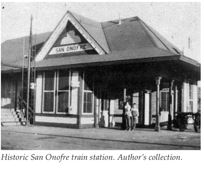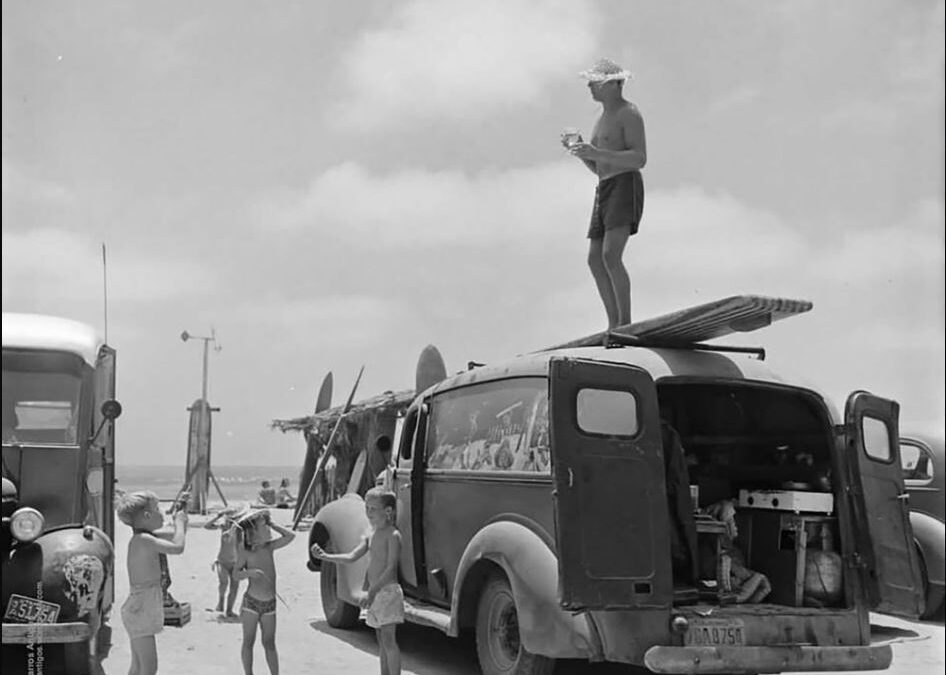e know San Onofre as the State Park just south of San Clemente. Long before the state park, there was a town of San Onofre with an interesting history. From about 1910 to 1960, driving along Highway 1 just into San Diego County, you would have passed the small town of San Onofre.
An 1840s map lists the area as Rancho de San Onofrio. The San Mateo watershed provided water to the ranch cattle and the vaquero camp.

In the 1870s, John Forster owned the ranch, and he sold portions of the ranchland, and the town of Forster City was built on the bluffs above the ocean. The 1880 Census showed 165 people, including farmers, sheep raisers and stock raisers. There was a stage depot, blacksmith shop, livery stable, a hotel and a one-room schoolhouse. Unfortunately, when Forster died in 1882, the town dwindled down to nothing.
Richard O’Neill took over managing the ranchland, and in 1888 when the railroad line was put in, a train depot was built at San Onofre. Its purpose was to transport cattle, other livestock and crops. The area became very popular with cattle events, including rodeos, and cattle buyers came from all over the Southwest.
Finally, with the 1910 Census, the population of San Onofre was mentioned, and the town was starting to take shape.
The area started to attract farmers, who grew celery, lettuce, cantaloupe, tomatoes, sugar beets, lima beans and flowers. Archibald Haven arrived from Michigan in 1925 with the Haven family seed company. The Haven family invested in the San Onofre economy and brought much success to the area.
Archibald Haven leased over 1,400 acres near the train stop, and the settlement around the train station grew into the small town of San Onofre. A paved highway was built in 1929, which helped the community grow even more with the building of a post office, a café, a service station, and a grade school. Local fishermen opened a market by the beach where the surf- ing beach is today. A surfing club was formed, bathrooms were built, and 25 cents was charged to enter the beach. Many of Southern California’s surfing legends were regulars at the beach, including actor James Arness.
By the 1940 Census, there were 680 people living in the area.
With World War II, the land was taken over by the military. The farming leases on the land began to run out. Many of the families living in San Onofre were farmers of Japanese de- scent. During the war, these families were sent to prison camps because of their Japanese heritage even though their families had immigrated to the U.S. and were no longer Japanese. This was one of the biggest injustices of the war.
When the freeway was built in the early 1960s, the last of the town’s buildings were dismantled.
After this, the military maintained the entire area until 1971, when San Onofre State Park was created with a 50-year lease. The lease has expired
.

Christine Lampert, Architect, AIA, NCARB
